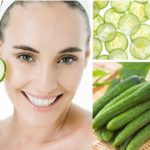Pustules
Pustules are a severe form of acne, often appearing as large, hard, swollen bumps that are initially painful and later become soft and filled with pus. Compared to other types of acne, pustules are more severely infected, larger in size, painful, more likely to leave scars, and can cause a higher degree of skin damage.
To effectively remove and prevent pustules, you first need to cleanse your face thoroughly, limit spicy foods, and supplement with fresh green vegetables and fruits to enhance the immune system for the skin. Additionally, you can use a few slices of fresh garlic or toothpaste applied to the pustule, leave it overnight, and apply it regularly every day. The pustules will quickly flatten and not leave scars.
Blackheads

Blackheads if prolonged and in large quantities will make the pores increasingly enlarged
|
Blackheads can appear in many different individuals, from adolescents to adults, and the main cause is dirt, dead skin cells, and excess sebum that clogs the pores. This type of acne has a black head due to oxidation and is located on the surface of the skin, mainly concentrated on the nose, chin, and cheeks. Although not painful, if blackheads are prolonged and in large quantities, they will enlarge the pores and make the skin rough.
To effectively remove blackheads, you should always cleanse your skin daily with a face wash, regularly apply toner. And at the same time, use a cream or natural blackhead strip to remove the blackhead without damaging the skin.
Cystic Acne

Cystic acne makes the skin rough, less aesthetically pleasing
|
Located deep under the skin, small in size and in clusters, cystic acne makes the skin rough, less aesthetically pleasing, easily spread to the surrounding areas, and difficult to remove. Most cystic acne appears in the area around the eyes, as this is a thin, sensitive area of the skin that is prone to injury.
Cystic acne cannot be completely treated by conventional methods such as exfoliating, using acne creams, requiring the use of laser technology and combining methods to help detoxify the liver.
Comedones

Comedones have white heads and slightly red surrounding acne
|
The signs of comedones are small in size, white heads, and slightly red surrounding acne, not causing pain when touched. The cause of whiteheads is due to the combination of follicles, sebum, and dead skin cells that clog the pores, causing blockage, inflammation, and the formation of comedones.
When having comedones, to limit the quantity and prevent the growth of acne, you need to control excess sebum, exfoliate regularly, wash your face 2-3 times a day with cleansers for acne-prone skin, and always remove makeup thoroughly after each makeup application.
Pustular Acne

Pustular acne with relatively large pustules
|
Pustular acne appears when the pores are clogged and encounter severe inflammation, with the distinguishing feature of white or yellow pus with relatively large pustules that are painful when touched.
Squeezing pustular acne indiscriminately will only make the acne grow larger and create pitted scars. Therefore, you should be patient and wait until they mature, have a yellow head, and then you can squeeze them to remove them. However, you need to pay attention to thoroughly clean your hands and face before doing so, then rinse again with diluted saline solution. In addition, don’t forget to keep your skin clean and breathable, eat healthily, and get enough sleep.
Good luck!





































